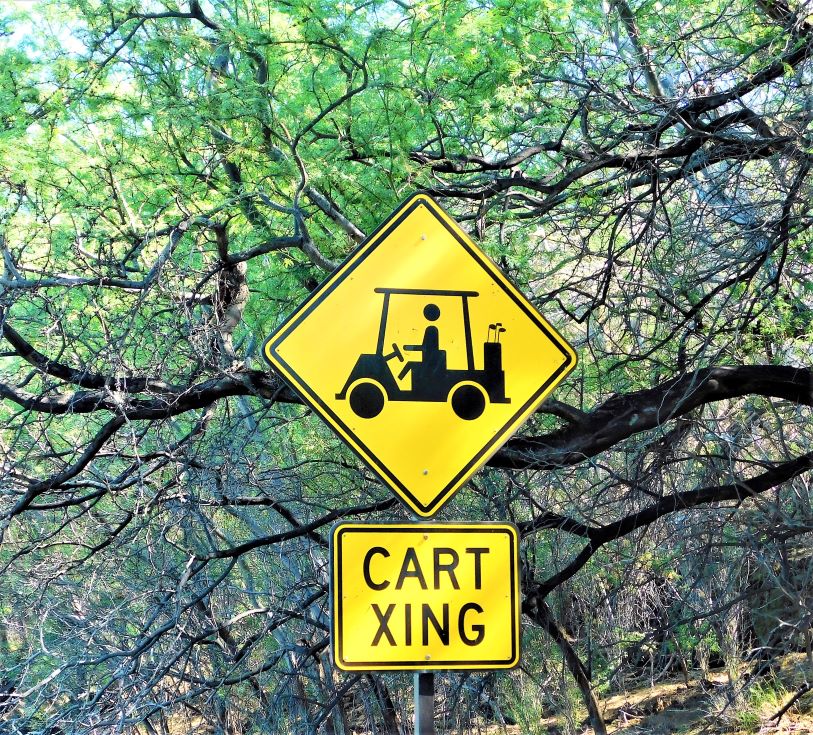
They’re a fixture of Florida living – golf carts, zipping through retirement communities, beach towns, resorts, and now, many residential communities. But behind the carefree image lies a troubling reality. Golf cart accidents are on the rise in Florida, causing serious injuries and even fatalities. Are these fun vehicles more dangerous than you think? If you’re a golf cart owner, operator, or simply share roadways with them, it’s time to understand the risks and legal complexities surrounding these seemingly harmless vehicles.
A Growing Problem
According to the U.S. Consumer Products Safety Commission, there are about 13,000 golf cart-related accidents that require emergency room visits each year. About 40% of those accidents involve children younger than 16. Half of the injuries seen in children result from kids falling out of a moving cart.
In a 2008 report published in the American Journal of Preventative Medicine, the rate of injury related to golf cart accidents rose over 130% from 1990 – 2006. During this time, about 147,000 golf cart-related injuries were reported, involving people as old as 96 and as young as 2.
Why are Golf Cart Accidents on the Rise?
The surge in golf cart-related mishaps begs the question: Why are so many people getting hurt in what has been perceived as a carefree and safe way to get around? The answer lies in a combination of factors, from the inherent lack of safety features in golf carts to the prevalence of inexperienced drivers, the threat of impaired operation, and their popularity in areas outside of the golf course.
1. Lack of Safety Features
Unlike cars, golf carts typically like the essential safety features like:
-
Seatbelts: In a crash, occupants of golf carts are at a high risk of ejection and serious injuries.
-
Airbags: These crucial safety devices are absent, leaving riders vulnerable to any impact.
-
Sturdy Roll Cages: Most golf carts only have minimal protection in case of rollovers, one of the most common types of accidents.
-
Studies by the Consumer Product Safety Commission (CSPC) show that most golf cart-related deaths involve rollovers where occupants are ejected.
-
2. Inexperienced and Underage Drivers
-
Prior to October 1, 2023, people as young as 14 were allowed to drive golf carts on designated paths. The New 2023 law, – HB 949 – mandated that teems must be AT LEAST 15 and hold a learner’s permit, or 16 and hold a driver’s license.
-
Younger drivers often lacked the judgement, experience, and training for safe driving. And when combined with factors like speed and distance perception, were more vulnerable to getting into accidents.
-
In addition, some communities still allow unlicensed drivers to operate gold carts in specific areas, increasing the risk of inexperienced drivers behind the wheel.
3. Alcohol/Substance Impairment
-
Golf cart use often coincides with leisure activities like golf, camping, attending sports events, etc. Unfortunately, this can lead to impaired driving.
-
Driving a golf cart under the influence is just as dangerous as driving a car while intoxicated:
-
Reaction times are slower.
-
Judgement is impaired.
-
Risk of accidents increases SIGNIFICANTLY.
-
4. Vehicle Traffic and Unfamiliarity with Traffic Laws
- In some areas, golf carts share roads with regular vehicles, creating a confusing scenario.
- Golf cart drivers may not be familiar with traffic laws or proper road etiquette, leading to accidents/collisions at intersections with faster-moving vehicles.
- In addition, other drivers might not be expecting slow-moving golf carts on the road, increasing the risk of accidents.
Golf Cart Laws and Regulations in Florida
The growing popularity of golf carts as a mode of transportation in residential and recreational areas has led to legislative actions aimed at ensuring safer operations. As more of these vehicles share the roads with cars and pedestrians, Florida has recognized the need to impose stricter regulations, in large part in response to an increase in accidents that have resulted in a skyrocketing number of injuries and fatalities.
In 2023, new legislation marked a significant shift in policy. HB 949, known as the “Golf Cart Bill,” went into effect on October 1. The legislation brought about several changes in the rules governing the use of golf carts in Florida. Here are some details:
1. New Age Restrictions
-
Golf cart drivers under age 18 must be:
-
At least 15 and have a Learner’s Permit.
-
Be 16 and have a Driver’s License.
-
-
Anyone 18 or older must have a valid government-issued ID to drive a golf cart.
-
Previously, anyone 14 or older was allowed to drive a golf cart.
2. Expansion of where Golf Carts can Operate
-
Previously, golf carts were mainly confined to golf course communities.
-
New legislation allows them to be used on specific roads that are owned by the Water Control District.
-
Approval for this designation must be granted by the county where the road is located (Section 316.212 of HB 949).
-
3. Required Golf Cart Safety Features
Any “low speed” vehicle, – top speed greater than 20mph, but not greater than 25mph – including golf carts, must be registered, titled and insured with personal injury protection (PIP) and property damage liability (PDL) insurance. They must also be equipped with safety gear including:
-
Headlamps
-
Front & rear turn signals
-
Stop lamps
-
Tail lamps
-
Parking Brake
-
Windshield
-
Seat belts
-
For a full list of required equipment, check the FLHSMV website.
-
This is the first of two articles that will discuss Golf Cart laws/regulations, and other information that is relevant to the personal injury claim process. In Part 2, we will discuss these topics:
-
Liability
-
Case Studies
-
How to protect oneself in the case of an injury.
-
How to prevent golf cart injuries.
Have questions about golf cart law, please contact GOLDLAW:
-
“Choose the 2’s” and call (561) 222-2222.
-
Submit your question to an expert GOLDLAW lawyer online.



